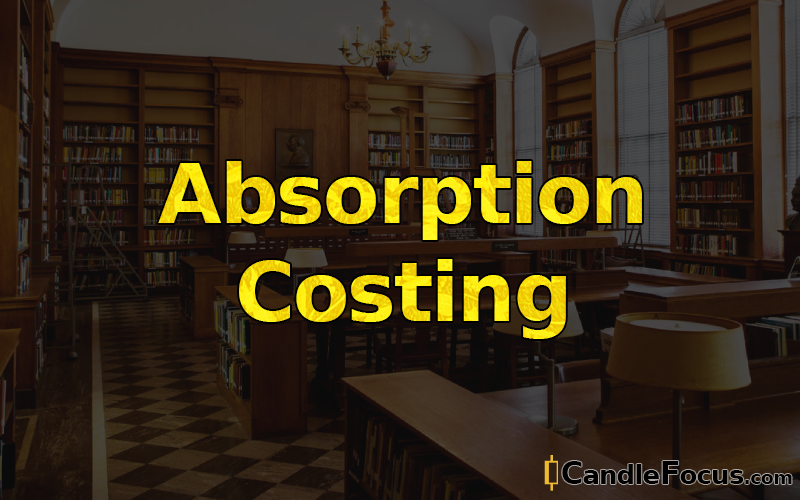Absorption costing is an accounting method used to allocate the cost of a product to all the necessary cost objects such as materials, labor, overhead, and other expenses, in order to determine the total cost of a product. At the same time, it is a method used for pricing and for monitoring inventory. This method incorporates both variable costs, such as labor and materials, and fixed overhead costs into the price of a product, regardless of whether it was sold during the period. Absorption costing, also referred to as “full cost accounting” and “full absorption costing,” is the ideal method of costing when preparing financial statements, since it captures all the different types of costs associated with producing a product.
An absorption costing system charges fixed costs to the specific product instead of an expense account such as rent, the cost of a piece of equipment, or the cost of a facility being used by the organization. These fixed costs are then spread and absorbed over the finished goods produced in a period, rather than just being absorbed into current period expenses. By using this method, the cost of goods sold automatically includes all of the necessary costs associated with producing the goods, making absorption costing a more complete and accurate way of accounting.
The result of using an absorption costing system is that net income reported on the income statement is usually reduced due to the cost of goods sold being higher. This is because expenses such as taxes, manufacturing costs, markdowns, and rent expenses become part of the product inventory. The value of the product's inventory on the balance sheet, however, will be higher, since it includes all the costs associated with all of the products that weren't sold in the period.
Absorption costing is especially useful for businesses in the manufacturing industry with large, high-cost facilities where fixed costs are high and need to be carefully managed. It is also useful for businesses that produce a variety of products in a single production run, and need to easily allocate costs across multiple products. At the end of the day, absorption costing is an essential accounting method for businesses looking to accurately measure the cost of producing and selling a product, and to make sure all of the associated costs are being accounted for when preparing financial statements.
An absorption costing system charges fixed costs to the specific product instead of an expense account such as rent, the cost of a piece of equipment, or the cost of a facility being used by the organization. These fixed costs are then spread and absorbed over the finished goods produced in a period, rather than just being absorbed into current period expenses. By using this method, the cost of goods sold automatically includes all of the necessary costs associated with producing the goods, making absorption costing a more complete and accurate way of accounting.
The result of using an absorption costing system is that net income reported on the income statement is usually reduced due to the cost of goods sold being higher. This is because expenses such as taxes, manufacturing costs, markdowns, and rent expenses become part of the product inventory. The value of the product's inventory on the balance sheet, however, will be higher, since it includes all the costs associated with all of the products that weren't sold in the period.
Absorption costing is especially useful for businesses in the manufacturing industry with large, high-cost facilities where fixed costs are high and need to be carefully managed. It is also useful for businesses that produce a variety of products in a single production run, and need to easily allocate costs across multiple products. At the end of the day, absorption costing is an essential accounting method for businesses looking to accurately measure the cost of producing and selling a product, and to make sure all of the associated costs are being accounted for when preparing financial statements.
 Esponel (es)
Esponel (es) Türkçe (tr)
Türkçe (tr) Russian (ru)
Russian (ru) 한국인 (kr)
한국인 (kr) Italiano (it)
Italiano (it) हिंदी (in)
हिंदी (in) عربي (ar)
عربي (ar) Français (fr)
Français (fr) Deutsch (de)
Deutsch (de) 日本 (jp)
日本 (jp) 中国人 (cn)
中国人 (cn)
 CandleFocus Glossary Editor
CandleFocus Glossary Editor